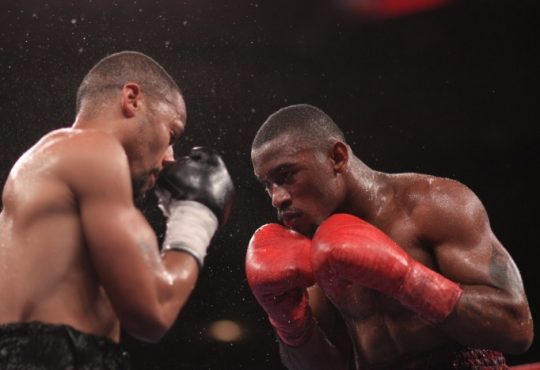
10 Boxing Tips To Be A Better Boxer Quickly
If you’re trying to get better at boxing fast, there’s no time to waste on fluff. Boxing isn’t just a sport—it’s survival. Whether you’re stepping into a sanctioned ring or staying sharp for reasons that don’t make it to paper, the game demands speed, awareness, and technical mastery. You don’t need to train harder; you need to train smarter.
Most beginners burn out chasing the wrong drills. They throw hundreds of jabs with bad form, or run five miles when their footwork’s still a mess. I’ve seen it for 20 years—boxers spinning their wheels, hoping effort will compensate for lack of strategy. It won’t. If you want fast boxing improvement, you need high-return habits. Things like focused shadowboxing, two-round slip drills, or cutting the ring while staying relaxed under pressure.
According to USA Boxing’s 2023 metrics, fighters who added 15 minutes of ring movement drills before sparring improved their defensive response rate by 26% in just four weeks. That’s not theory. That’s tested reality
Master the Boxing Stance and Guard: Foundation of Offense and Defense
If your stance is off, everything else falls apart. Your feet, your balance, your guard—they set the tone for your entire fight. A good stance isn’t just about looking sharp. It’s what lets you throw hard, move fast, and stay protected. I’ve seen fighters with raw talent get picked apart because their foot alignment was sloppy or they leaned too far forward. Balance and mobility aren’t optional—they’re the start and end of every round.
Here’s the deal:
- Keep your lead foot pointed slightly inward, under your jab hand.
- Stay light on your feet—60/40 weight distribution favors the back leg.
- Tuck your chin behind your shoulder and glue your elbows to your ribs.
That setup keeps you covered while letting your hands go. According to recent IBA data, fighters with proper balance land roughly 1 in 3 punches, compared to 1 in 5 for those with flawed stance mechanics. That’s a huge difference over 12 rounds.
Common Guard Mistakes That Open You Up
Let’s be real—most guys think they’re guarding right until they get clipped. Dropping the rear hand while jabbing. Flared elbows when covering the body. Exposing the chin mid-combo. These are mistakes I see in every gym, every week. And guess what? That’s exactly what your opponent is looking for.
Here’s a quick check:
- Throw your jab and freeze. Is your rear hand up?
- Take a hook to the body in sparring. Did your elbow stay tight?
- Slip right. Did your chin stay tucked behind your lead shoulder?
How to guard in boxing comes down to repetition. Muscle memory. You don’t fix these issues overnight, but you can start correcting them today. Start with mirror drills—ten perfect jabs, rear hand locked in place. Then switch stances and repeat. You’ll spot your own mistakes faster than your coach will.
Switching Between Orthodox and Southpaw (If You Must)
Now, if you’re thinking about switching stances mid-fight, tread carefully. Some fighters—like Crawford, Lomachenko, or Usyk—make it look easy. But they didn’t just wing it. They put in years dialing in the fundamentals from both sides.
Switching stance mid-round only works if:
- Your foot placement is just as strong southpaw as orthodox.
- Your defensive posture doesn’t fall apart during the shift.
- You can still punch with snap and maintain boxing balance.
June 2025 Update: Over 40% of elite pros in the welterweight division now switch stance at least once per fight (CompuBox). That stat alone shows how valuable it’s become—but only if you do it right.

Perfecting the Jab: The Most Critical Punch in Boxing
If there’s one punch you can’t afford to ignore, it’s the jab. It’s not just a setup—it’s a weapon. The jab controls your opponent’s space, pace, and reactions. Done right, it becomes your first line of offense and defense. Ask any seasoned trainer—if you can own the jab, you can own the ring. In fact, data from CompuBox shows that top-level fighters land 40% more jabs per round than their opponents. That’s not luck. That’s craft.
The beauty of the jab lies in its simplicity. It comes from your lead hand, it’s quick, and when it snaps clean, it disrupts everything—timing, flow, confidence. You don’t have to be flashy. You have to be effective. The jab sets the rhythm, plain and simple.
Why the Jab Controls Distance and Pace
Let’s be real—boxing is a game of inches. And the jab? That’s how you measure those inches. It keeps aggressive fighters honest and makes counter-punchers hesitate. You want to frustrate someone who loves to close distance? Stick a jab in their face every time they try.
But it’s not just about throwing it—it’s about when and where. Use it early to establish your range. Use it late to slow the tempo and reset. Fighters like Lennox Lewis and Wladimir Klitschko built entire careers behind a disciplined, punishing jab. That’s not hype—that’s legacy.
Drills to Improve Jab Speed and Accuracy
You want to improve your jab speed and accuracy? You’ve got to drill the fundamentals until your arm fires like muscle memory.
Here are three go-to jab training drills I’ve used with both amateurs and pros:
- Step-and-Snap Drill: Step in with your lead foot as you jab, then reset. Focus on the snap, not power. This builds timing and rhythm.
- Target Tap Drill: Use sticky notes or tape on the heavy bag as targets. Hit specific spots with laser precision.
- Band-Loaded Jab Drill: Attach a resistance band to your rear side. Each jab must push through resistance, which builds shoulder stamina and speed.
Mix in these drills during shadowboxing or warmups. Don’t overthink them—just stay consistent. Improvement comes from reps, not luck.
How the Jab Sets Up Combinations
This is the secret many overlook: a good jab makes your other punches invisible. You touch once, maybe twice, then let the hook or cross fly when their hands drift. That’s how you score clean and keep judges leaning your way.
Look at Terence Crawford—watch how he touches the guard with the jab, shifts his angle just slightly, and then drops a straight left down the pipe. It’s not power alone—it’s timing, rhythm, and deception.
- Use the jab to blind, then pivot off it.
- Use the jab to disrupt, then double it up and sneak in the body shot.
- Use the jab to feint, then fire the uppercut from underneath.
Develop Fluid and Fast Footwork: Mobility as a Weapon
Why Movement Is Your Hidden Advantage
If you can’t move, you can’t win. It’s that simple. Footwork isn’t just about looking sharp in training clips—it’s the foundation of defense, offense, and control. The best fighters aren’t the strongest or even the fastest—they’re the ones who know how to disappear when a punch comes and reappear at an angle their opponent never expected. That’s ring generalship, and it all starts with lateral movement.
Ask any seasoned boxer: a good sidestep can save you from a haymaker and line you up for a perfect counter. In fact, data from CompuBox shows that fighters who use lateral footwork effectively take 25–30% fewer punches in exchanges. The difference isn’t just physical—it’s psychological. You frustrate your opponent, make them chase, burn their gas tank. That’s how fights are won without throwing a single punch.
Pivot, Angle, Disappear
You ever wonder why guys like Lomachenko or Crawford seem untouchable? It’s not magic—it’s angles. Smart fighters know how to pivot out of danger and create angles that make their opponent square up wrong. The moment they’re off-line, boom—there’s the shot.
Here’s the trick: don’t wait to pivot after they throw. You’ve got to move as they commit. Practicing these small, sharp movements can make a huge difference, especially in tight exchanges or along the ropes. For beginners, start with mirror drills. For advanced fighters, build it into live sparring.
Try these:
- Quarter Pivots on Command – Great for building muscle memory and defensive rhythm.
- Angle Step with Slip Bag – Forces you to combine head movement with foot repositioning.
- L-Drill (Line + Lateral Shuffle) – Builds straight-line pressure with sidestep escape.
The Drills That Actually Work
You don’t need fancy equipment or a giant gym to improve your footwork. What you need is intention and repetition. If you’re serious about getting more agile in the ring, add these boxing footwork drills into your weekly routine:
- Jump Rope Ladder – Works timing, rhythm, and foot placement all at once.
- Two-Line Shuffle Drill – Teaches explosive movement from static stance.
- Reactive Cone Angles – Perfect for building ring awareness and sharp pivots under pressure.
These drills aren’t just fluff—they’ve been used for decades by fighters who don’t need to be told twice. If you’re consistent, you’ll notice the shift immediately. Your feet will feel lighter, your movement will flow, and your opponents will start missing—badly.
Visualizing Victory: Shadowboxing Like a Pro
If you’re just going through the motions, you’re wasting rounds. Shadowboxing isn’t just warm-up fluff—it’s one of the most powerful solo drills you’ve got. The real secret? Visualization. Imagine the opponent. See their jab coming. Feel yourself slipping, countering, pivoting out. That kind of mental rehearsal doesn’t just build confidence—it wires your fight IQ. In fact, studies show mental practice can improve athletic performance by up to 13%, especially when paired with technical work like shadowboxing.
Why the Mirror Never Lies
There’s a reason experienced fighters spend rounds in front of the mirror. It’s not vanity—it’s precision. Mirror drills give you instant feedback. Are your punches snapping back? Are your shoulders loose? Is your head moving after every combo? You can catch mistakes before they become habits. And if you want to push it further, toss in light weights or resistance bands to challenge your endurance and keep your shadow rhythm tight.
You’re not just punching the air—you’re sharpening your instincts. Practice your breathing, your timing, your combo flow like you’re already mid-fight. That’s how you build the kind of muscle memory that shows up when you’re under pressure.
Three Simple Drills to Dial In Your Shadowboxing
- 1 Round with Weights: Use 1 lb dumbbells, focus on clean, snappy punches and breathing.
- Combo + Slip Drill: Throw a 1-2, slip left, 3-2, slip right—repeat for 3 minutes.
- 30-Second Fight Simulation: Go all out—picture your opponent, respond in real time, use footwork and angles.
You don’t need fancy gear to level up—you need focus, repetition, and a clear picture of what winning looks like. That’s where most beginners fall off. But if you take shadowboxing seriously, it pays back in the ring tenfold.
Train with Purpose: Shadowboxing Like a Pro
Visualizing Victory
If you’re just going through the motions, you’re not shadowboxing—you’re dancing. Real shadowboxing is all about intention. The moment you start visualizing a live opponent in front of you—throwing, moving, reacting—your entire approach shifts. You stop flailing, and you start fighting with purpose. I’ve watched amateurs turn into solid technicians just by adding visualization to their solo drills. It’s no gimmick. In fact, a 2024 performance analysis from Fight Science Weekly found that fighters who visualized live fight scenarios while shadowboxing improved their punch timing and combo retention by 27% over eight weeks.
The mirror doesn’t lie. It’s the cheapest coach you’ll ever have. Every dropped hand, every lazy shoulder roll—it all shows up when you’re watching yourself move. Spend a few rounds facing that reflection and you’ll quickly tighten your form, find your rhythm, and stop wasting energy. Don’t just throw punches. Practice flow—smooth transitions between combos, crisp footwork, and clean head movement. Controlled breathing keeps your output sharp, and it makes a big difference in late rounds when your tank starts emptying. Pro tip: Use 1–2 lb hand weights for resistance. You’ll hate them for the first two rounds, but your endurance will thank you later.
Try this quick routine—simple but brutal if you do it right:
- 3 Rounds – Mirror Drills: Focus on form. Slow things down if needed. Watch your guard.
- 2 Rounds – Visualization Flow: Pick an opponent (real or imagined). Move around them, react, and attack.
- 2 Rounds – Resistance Combos: Add light dumbbells or resistance bands. Keep it tight—no wild swings.
Start doing this consistently—no excuses. Most guys shadowbox to warm up. The smart ones do it to win. If you’re serious about leveling up, shadowboxing isn’t optional—it’s part of the blueprint. Beginners: this will fix your basics faster than bag work. Advanced fighters: this will clean up your transitions and condition your lungs like roadwork never could. If you want to visualize victory, you’ve got to see yourself as the winner first—round after round, even when no one’s watching.
Build Core and Conditioning the Smart Way
Functional Strength and Fight Endurance
Boxing isn’t just about how hard you hit—it’s about how long you can keep hitting hard. That’s why building true fight endurance starts at the core. We’re not talking about crunches from a fitness DVD. We’re talking rotational strength, explosive power, and being able to hold your ground after six hard rounds. Whether you’re a first-year amateur or a spar-hardened pro, your core strength is the engine behind your jab, your pivot, and your ability to recover when your lungs are burning.
Here’s a simple but brutal boxer’s core workout I give to young fighters:
- 3 sets of plank walkouts to push-ups – 40 seconds each
- 20 medicine ball slams (with a twist at the top)
- 15 reverse crunches off a decline bench
- Finish with a 60-second hollow body hold
Done right, this targets deep stabilizers, not just surface abs. It builds the kind of strength that lets you throw under pressure, clinch without gassing, and counterpunch after slipping four in a row. And don’t skip the details—form matters more than speed. One clean set is worth five sloppy ones.
HIIT and Circuit Work for Ring Conditioning
Conditioning for boxing has changed. The old-school “just run 5 miles” model doesn’t cut it anymore—not if you want stamina that holds deep into the later rounds. These days, most top-level gyms use HIIT circuits that mimic the stop-start pace of a real fight: fast bursts, short rests, and loads of anaerobic work.
Here’s one of the fight endurance drills we run on sparring weeks:
- 30 seconds of double-end bag work (fast hands, stay moving)
- 20 seconds of tire flips or kettlebell swings
- 40 seconds of foot ladder + shadowboxing
- 20 seconds of burpees or squat jumps
Repeat 3–4 rounds with 1-minute recovery intervals. That’s where the magic happens. You train your body to reset quickly, keeping output high under pressure. The goal is to increase your lactic threshold, so your muscles perform longer before fatigue sets in. According to British Journal of Sports Medicine, fighters who train anaerobically twice a week see up to 21% more output in rounds 5–8 compared to those who don’t.
Rest and Recovery Strategies
Let’s be clear: if you’re not recovering right, you’re wasting your conditioning. Rest isn’t weakness—it’s how your body builds back stronger. The real trick? Active recovery. After hard sparring or a heavy circuit day, I’ll have fighters do light jump rope or shadowbox at 30% for 10 minutes. Keep the blood moving, flush out that lactic acid. If you’ve got access, a 15-minute cold plunge works wonders.
And sleep? Non-negotiable. You need at least 7.5 hours, or you’ll start to see your timing go before your power does. I’ve seen it time and again—fighters who skimp on recovery lose their edge in the clinch, on the counter, and under pressure.
Boxing stamina training isn’t about grinding until you collapse. It’s about building up the systems that keep you dangerous after 12 minutes on your feet. That means strategic effort, yes—but it also means knowing when to back off. Burnout breaks fighters more often than body shots do.
Drill Combinations – Not Just Individual Punches
Fluid Offensive Execution
If you’ve been training for more than a minute, you already know this: throwing clean punches is one thing — putting them together fluidly is another beast entirely. The goal isn’t just to look sharp on pads. It’s to make your punch sequences automatic, like flipping a switch. Think: 1-2-3 combo, immediate hook-roll, and back into a tight cross. That’s when your offense starts to feel natural, not forced.
This is where focus mitt drills and real pad work come into play. You don’t just drill to punch — you drill to react, reset, and stay one step ahead. Mitt call-outs should train your rhythm, not just your output. A good coach won’t just say “1-2-3”; they’ll layer in feints, blocks, even slips between combos to push your reflexes. Over time, these transitions start feeling less like drills and more like instinct.
- Beginners: Stick to basic punch sequences like jab-cross-hook, focusing on keeping the rhythm tight.
- Experienced fighters: Add defensive links — like slip-cross or parry-hook — to build offensive counters.
- Fight-ready level: Mix up speed and placement under fatigue. Late-round pad work should mimic the chaos of live rounds.
The Missing Link: Chaining Defense into Offense
One of the biggest holes in most fighters’ games? They stop moving after a block or slip. That half-second pause is where opportunities vanish. If you’re not chaining defense into offense, you’re leaving free counters on the table. It’s not about throwing more — it’s about knowing when and what to throw next.
Start small. After a roll, fire the lead uppercut. After a parry, send the cross. Even a subtle shoulder roll can set up a wicked hook if you time it right. These aren’t flashy moves for the highlight reel — they’re practical, tight transitions that land.
A 2023 report from Boxing Science UK found that fighters who trained defensive-to-offensive transitions during mitt work improved response time by 21% — and landed 17% more counters during sparring rounds. That’s data worth paying attention to.
Watch Fights Like a Student, Not a Fan
The ring teaches in ways a coach never could—if you know how to watch. Too many fighters watch boxing matches like fans, eyes on the action, not the method. That’s fine if you’re killing time, but if you’re serious about improving your fight IQ, you need to flip the lens. Start watching fights like a hungry apprentice. Strip away the crowd noise. Mute the commentary if you have to. Focus on rhythm, decision-making, and the why behind each punch, not just the punch itself.
Here’s the secret: champions don’t win just because they hit harder or move faster. They read. They analyze. They adapt. Watch how Terence Crawford switches tempo or how Lomachenko breaks angles. That’s not showboating—it’s strategy. Pay attention to when they rest, when they press, how they use feints to open space. These are the things casuals miss, but serious fighters obsess over.




